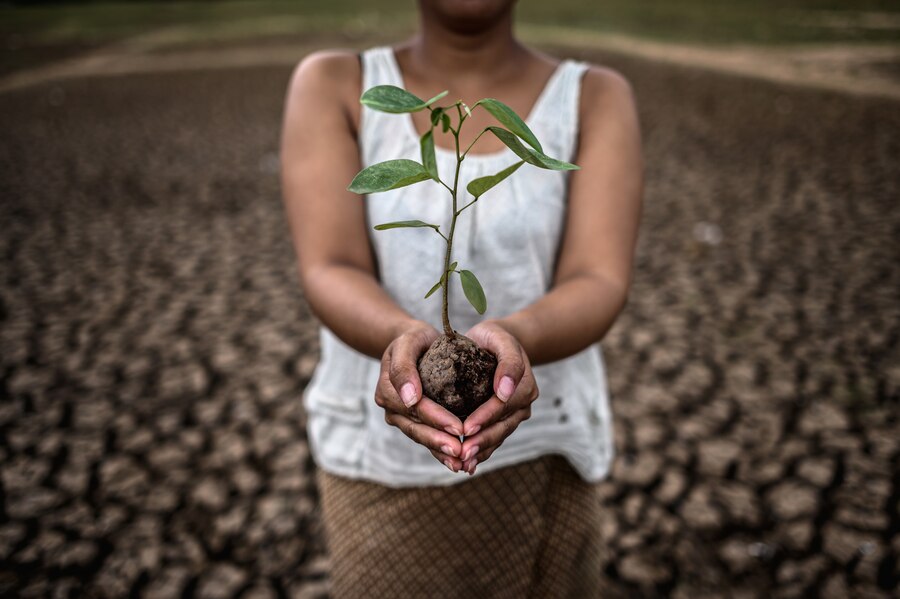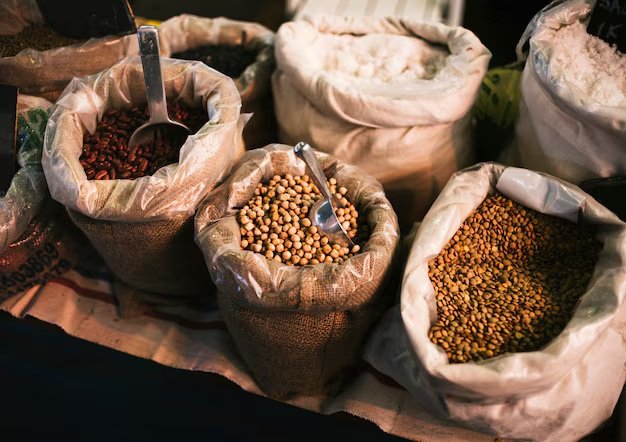Are Trees a Renewable Resource? An Expert Guide
Trees are one of nature’s most precious gifts. They give us the oxygen we breathe, shade on a hot day, and wood for countless purposes. Beyond that, they play a huge role in absorbing carbon dioxide and creating habitats for wildlife. But with the way forests are being cut down and climate change is reshaping our environment, it’s natural to wonder—are trees truly a renewable resource?
The simple answer is yes, trees are renewable. They can grow back after being cut down as long as we replant and nurture them. But here’s the catch: it’s not automatic. Without responsible forest management and environmental care, trees can become a limited resource.
In this guide, we’ll break down what makes trees renewable, the challenges that threaten their sustainability, and practical steps we can all take to protect them. You’ll hear real-world examples, expert insights, and actionable advice that can help ensure forests thrive for generations to come. Whether you’re an environmental enthusiast or just someone who cares about the planet, this guide is for you.

In This Article
- What Makes a Resource Renewable or Non-Renewable?
- The Science of Tree Growth and Sustainability
- Challenges to Trees as a Renewable Resource
- The Role of Technology in Sustainable Forestry
- Renewability Statistics: Global Tree Planting Trends
- How to Ensure Trees Remain a Renewable Resource
- Conclusion:
What Makes a Resource Renewable or Non-Renewable?
A renewable resource is something nature can replenish within a relatively short time, often within a human lifetime. Think about resources like sunlight, wind, and water—they naturally keep coming back. On the other hand, non-renewable resources, like coal, oil, and natural gas, take millions of years to form, and once they’re gone, they’re gone for good.
So, where do trees fit in?
Trees are naturally renewable. They can regrow from seeds, saplings, or even from stumps in some cases. But here’s the catch: their renewability depends heavily on how we treat our forests. If trees are cut down faster than they can grow back, forests shrink, and trees risk becoming a diminishing resource. Imagine if you kept withdrawing money from your bank account without depositing anything back—eventually, you’d run out.
That’s why practices like responsible forest management and reforestation are crucial. When loggers selectively harvest trees and plant new ones, forests can continue thriving. But when forests are cleared recklessly without replanting, we end up with barren land and disrupted ecosystems.
Trees can absolutely be a renewable resource—but only if we care for them responsibly and give nature the time and space it needs to regenerate.
The Science of Tree Growth and Sustainability
Understanding how trees grow helps us appreciate their potential as a renewable resource. Trees go through distinct growth stages, each playing a crucial role in maintaining healthy ecosystems. Let’s break down these stages in simple terms:
Seed Germination
Every tree starts from a seed. It might seem small and insignificant, but given the right conditions—good soil, sunlight, and moisture—that seed springs to life. Germination is the first miracle of a tree’s journey, marking the beginning of what could become a towering oak or a shade-giving maple.
Sapling Stage
Once the seedling takes root, it becomes a sapling. This is the tree’s teenage phase, where it grows rapidly and starts contributing to the environment by absorbing carbon dioxide and producing oxygen. These young trees are essential in combating climate change and restoring green spaces.
Mature Growth
When trees reach maturity, they hit their stride. Their growth slows down, but they play an even more significant role in the ecosystem. Mature trees provide shade, stabilise soil, support wildlife, and store vast amounts of carbon. They become environmental guardians, standing tall and strong for decades or even centuries.
Decline and Regeneration
Just like all living things, trees age and eventually die. But this isn’t the end of the story. As they decay, trees enrich the soil, and their seeds often restart the cycle of life. Forests naturally regenerate, given the chance.
Case Study: Reforestation Success in Costa Rica
According to a 2020 study, Costa Rica offers a powerful example of how trees can remain a renewable resource when managed wisely. In the 1980s, nearly half of the country’s forest cover had been lost due to deforestation. The environmental consequences were severe, threatening wildlife habitats and increasing soil erosion.
Determined to turn things around, Costa Rica launched aggressive reforestation programs and embraced sustainable forest management. By 2015, the country had doubled its forest cover, becoming a global leader in environmental conservation.
| Year | Forest Cover (%) | Reforestation Efforts (Hectares) |
|---|---|---|
| 1980 | 30% | Minimal |
| 2015 | 54% | Over 1.5 million hectares |
Costa Rica’s success is a reminder that trees can indeed be a renewable resource when we prioritise conservation and reforestation. With proper care, nature has an incredible ability to heal and thrive.
Learn More: What Is a Tree Hugger? An Expert Guide
Challenges to Trees as a Renewable Resource
Despite their potential for renewability, trees face several challenges:
1. Deforestation
Deforestation remains one of the biggest threats to forests worldwide. According to the World Bank, we lose about 10 million hectares of forest annually—that’s equivalent to 27 football fields being cleared every minute. This widespread deforestation not only reduces tree cover but also disrupts entire ecosystems, affecting wildlife habitats and diminishing the natural processes needed for forests to regrow.
Expert Insight: According to studies, including experts from the Nature and Culture International Deforestation, not only reduce tree cover but also disrupt the entire ecosystem, making it harder for forests to regenerate naturally.” Her research emphasises the long-term impact on biodiversity and soil health.
2. Climate Change
Rising global temperatures and unpredictable weather patterns are increasingly impacting tree growth. Changes in rainfall patterns and prolonged droughts affect seed germination and reduce tree survival rates. Additionally, extreme weather events such as wildfires and storms can devastate vast areas of forest, setting back reforestation efforts by decades.
3. Illegal Logging and Unsustainable Harvesting
Unsustainable logging practices, driven by illegal operations or poorly regulated industries, are another major concern. These practices often focus on high-value tree species and leave behind degraded forests with little chance for natural recovery. When trees are removed without replanting efforts, the balance necessary for forest regeneration is lost.
4. Soil Degradation
Healthy soil is essential for tree growth, but overextraction and poor land management practices deplete soil nutrients. Without fertile soil, newly planted trees struggle to take root and thrive. Soil erosion, often a consequence of deforestation, further compounds the problem by washing away the top layer of fertile earth.
Addressing these challenges requires a combined effort from individuals, governments, and organisations to protect forests, implement sustainable practices, and restore degraded land.
The Role of Technology in Sustainable Forestry
1. Drones and Satellite Monitoring
Imagine being able to watch over vast forest areas without setting foot in them. That’s exactly what drones and satellite technology make possible. Drones fly over forests, capturing real-time images that help conservationists spot illegal logging or check for signs of disease. Satellite images offer a broader view, allowing scientists to monitor forest density and see how well trees are regenerating.
2. AI-Powered Forest Management
Artificial intelligence (AI) is becoming a forest manager’s best friend. With AI, experts can analyse vast amounts of data to predict the best times to plant trees and identify early signs of tree health issues. This not only saves time but also improves reforestation efforts. It’s like having a smart assistant that helps forests thrive.
3. Biotechnological Advancements
Biotechnology is paving the way for stronger, faster-growing trees. Scientists are researching ways to develop trees that can withstand harsh weather, resist diseases, and grow more efficiently. While this field is still developing, it holds immense promise for the future of sustainable forestry.
Real-World Example: Finland is a leader in using AI for forest management. By adopting AI-powered systems, they’ve increased timber yields by 20% while maintaining sustainable practices. It’s a shining example of how technology can strike a balance between economic needs and environmental protection.
Renewability Statistics: Global Tree Planting Trends
| Country | Annual Reforestation (Hectares) | Deforestation Rate (Hectares) | Net Forest Gain/Loss |
|---|---|---|---|
| Brazil | 500,000 | 1.3 million | -800,000 |
| China | 1.5 million | 300,000 | +1.2 million |
| India | 900,000 | 400,000 | +500,000 |
| USA | 700,000 | 700,000 | Neutral |
Learn More: 11 Fast-Growing Trees for Shade at Home
How to Ensure Trees Remain a Renewable Resource
1. Practice Responsible Forestry
Forests are like living, breathing communities that need care and balance. When trees are cut down without proper planning, it disrupts wildlife habitats, soil health, and even weather patterns. Sustainable logging practices, such as selective harvesting (where only certain trees are cut down while leaving younger ones to grow) and avoiding clear-cutting large areas, are essential.
A great example is the approach in Sweden, where laws require loggers to replant trees after harvest. This ensures that forests remain productive and healthy. As consumers, we can support companies that follow these responsible forestry practices.
2. Support Reforestation Initiatives
Reforestation is about giving back to nature. Every tree planted is a small step toward restoring ecosystems and fighting climate change. Organisations like Eden Reforestation Projects and One Tree Planted are doing incredible work planting millions of trees worldwide. These groups often work with local communities, creating jobs while restoring critical forest cover.
If you want to make a difference, donating to or volunteering for these projects is a meaningful way to contribute. Even small donations can plant several trees.
3. Choose Certified Wood Products
Wood is a renewable resource, but only when it comes from responsibly managed forests. Look for certifications like the Forest Stewardship Council (FSC) label when buying wood products, including furniture, paper, and building materials.
The FSC certification ensures that the wood you buy comes from forests where biodiversity is protected, and harvesting is done sustainably. It’s a simple but impactful way to vote with your wallet for better forest management.
4. Engage in Community Planting Events
Planting trees can be a joyful and fulfilling experience. Community planting events are a fantastic way to reconnect with nature and meet like-minded people. Many local environmental groups or city councils host events where volunteers can plant native trees.
I remember participating in a tree-planting event in my neighbourhood a few years ago. Seeing the young saplings thrive today is a reminder of how small efforts can leave a lasting legacy. Plus, it’s a wonderful family activity that teaches kids the importance of caring for the environment.
5. Advocate for Policy Changes
Strong laws and regulations are essential for protecting forests. Advocacy can start small by signing petitions, reaching out to local government officials, or supporting environmental organisations that fight for better forest management policies.
A great example is Brazil’s efforts to curb deforestation in the Amazon through strict monitoring and enforcement policies. While challenges remain, advocacy and public pressure have led to some progress.
Conclusion:
Trees have the potential to be a renewable resource, but their sustainability depends on collective human effort. From adopting responsible consumption habits to participating in reforestation projects, everyone has a role to play.
As I learned from my grandfather’s eucalyptus plantation, nature rewards those who care for it. Let’s commit to being good stewards of our forests and ensure that trees remain a renewable, life-sustaining resource for generations to come.







